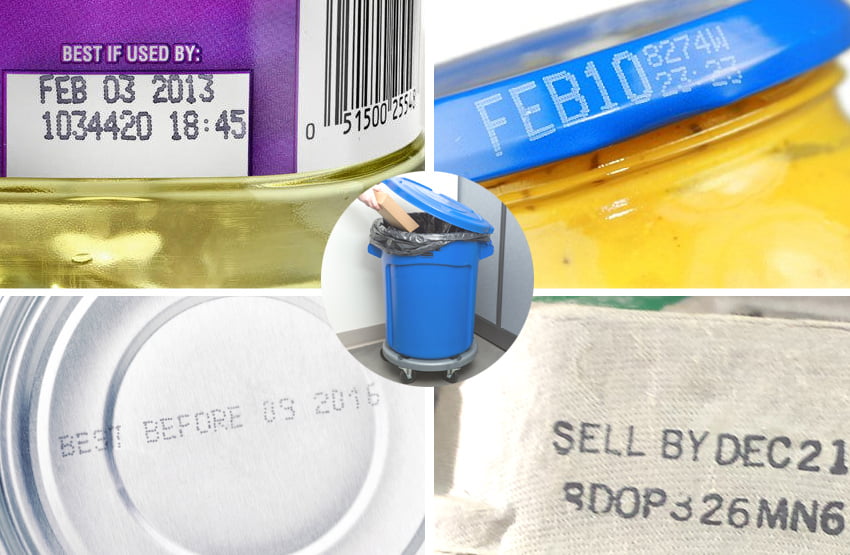The move to save food by changing labels
Food waste in America is a problem. According to the National Resources Defense Council 40% of the food produced in America goes uneaten. This translates to about $218 billion worth of food that the nation wastes every year. Food waste occurs at every stage in the food system from farm to table however consumers are responsible for more of the waste than grocery stores, restaurants or any other part of the supply chain.
It’s not all the consumers fault. For years the American shopper has been trained to mind the variety of expiration dates they see on their food products. Studies show that more than 80% of Americans misinterpret date labels and throw food away prematurely, under the misconception that it’s necessary to protect their families’ health. Walk down any grocery aisle and it does seem that nearly every food item has one of these dates stamped on in it. Generally speaking their are three different dating systems 1) Best if Used By/Before 2) Sell-By and 3) Use By dates.
Best if used by/before
This date really is a marketing tool. Food companies want you to consume their foods when they are at their peak taste and/or in a timely manner so that you will go out and ‘re-stock’ up. The date may accurately reflect how long the manufacturer believes their product will be of best quality but that’s about it. For most dry foods many people would have a difficult time discerning the difference between food that is past this date or not.
![]()
Sell-by
This is a date for the retailer more than the consumer and it tells the store how long to display the food for sale. Again, manufacturers want their products consumed as soon as possible. This means that the consumer will eat the food when it’s at peak flavor but it also has the effect of forcing retailers to move the stock on the shelves and place an order for more product.
![]()
Use-by
This date is the recommended date for using the product for the best quality. With infant formula and baby food this date is related to food safety. The USDA says consumers should not to buy or use baby formula after its use-by date. For all other foods, it’s a recommendation.
The obvious test with a lot of products is the smell/look test and using good common sense. Foods don’t actually “expire” and most are safe to eat even after these date have passed. They may not be as tasty as they were because they’re not as fresh anymore. Food companies use the labels to protect the reputation of their products. They want consumers to see and consume their food in as fresh a state as possible. But the dates have the perverse effect of convincing over-cautious consumers to throw perfectly good food into the trash.
There’s a move afoot in the food industry to change the practice of using these three dates. Leading associations are advising major food manufacturers and retailers to abolish the current labels in favor of using the ‘best if used by’ date. In addition, the USDA recently issued guidance that asked companies voluntarily to adopt “best if used by” label.
Whatever date a product uses it’s important to remember that – except for infant formula and baby food – none of these dates are either regulated by the federal government nor should they be used as a food safety guide. The truth of the matter is that unless a food is contaminated most spoiled foods, while they may not taste very good are not particularly hazardous to your health.
For those who still fret over whether a foods ‘expiration dates’ affects their health or safety then there are plenty of Internet resources such as www.stilltasty.com or the USDA’s FoodKeeper app which can be useful.

